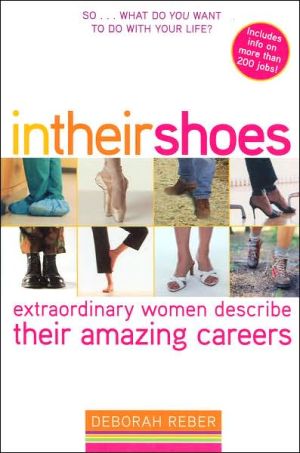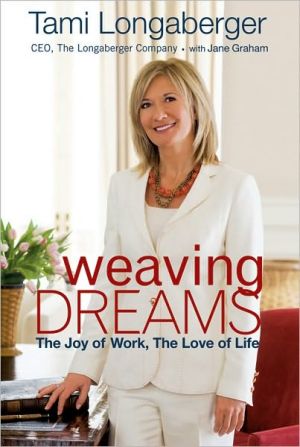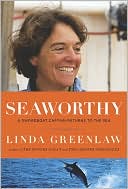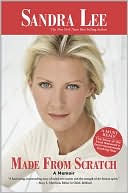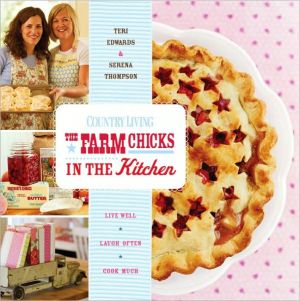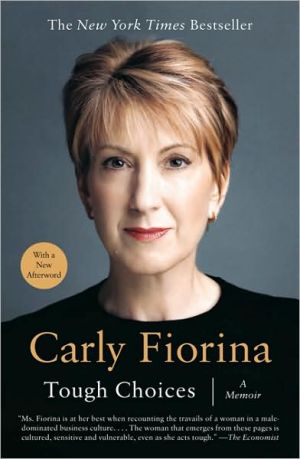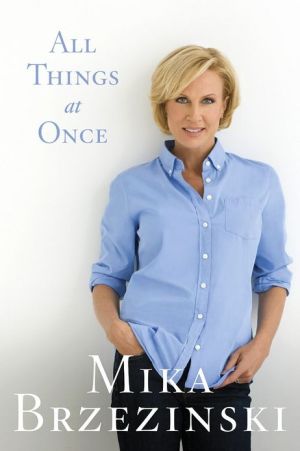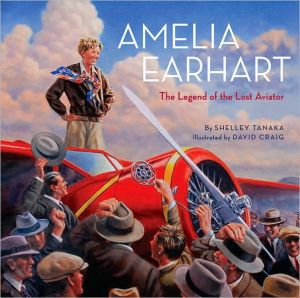In Their Shoes: Extraordinary Women Describe Their Amazing Careers
FOLLOW IN THE FOOTSTEPS OF AMAZING WOMEN WHO HAVE THE JOBS OF YOUR DREAMS!\ Find out what you really want to know about your career choices:\ What will I do every day?\ Will I wear Prada or Old Navy?\ Play with kids on the playground, or with bigwigs in the boardroom?\ Power lunch at the Ivy, or bag lunch at my desk?\ What kind of education do I need?\ This book is packed full of answers. "Day in the life" profiles will inspire you, while a ton of sidebars, lists, and helpful tips will get...
Search in google:
FOLLOW IN THE FOOTSTEPS OF AMAZING WOMEN WHO HAVE THE JOBS OF YOUR DREAMS!Find out what you really want to know about your career choices:What will I do every day? Will I wear Prada or Old Navy? Play with kids on the playground, or with bigwigs in the boardroom? Power lunch at the Ivy, or bag lunch at my desk? What kind of education do I need?This book is packed full of answers. "Day in the life" profiles will inspire you, while a ton of sidebars, lists, and helpful tips will get you started right away on finding the career that's right for you. Discover words of wisdom from women in the workforce, including:• Shonda Rhimes, creator and executive producer of Grey's Anatomy, who thinks her job is like running a small country — PAGE 2• Susan Schulz, editor in chief of CosmoGIRL!, who compares her life to both a chess game and the prom — PAGE 289• U.S. Senator Barbara Boxer, who says that if you're passionate about an issue, you can turn it into a career — PAGE 283Browse through the profiles to find the job that's right for you, or use the career chooser to narrow your search. Packed with informative and inspirational advice from women at every stage of their careers, In Their Shoes is a must-have reference for every aspiring working girl! KLIATT Reber's overview of exciting, satisfying careers for women compiles a wide range of outlets for girl power. The informative template summarizes career essentials—job location, salary, dress code, stress—with bulleted blurbs before introducing the model in her own words. Sidebars stipulate background, temperament, and preparation demands along with a chronology of individual careers in the media, midwifery, the military, yoga, education, merchandising, and the arts. Photos display 49 women from many cultures; no example looks exceptionally beautiful or wealthy. One entry describes the synergy of a two-woman team of restaurant chefs. Workbook exercises encourage the reader to list talents and goals and to frame a positive outlook toward finding satisfaction in work. Highly recommended for public and school libraries and counseling offices and as a gift for a girl who is beginning to ponder her future.
introduction\ When I was a teen, there were three things my parents heard from me on any given day. The first was "I don't know" as an automatic response to any question regarding why I had done something stupid. The second was the lyrics to some pop song, sung at the top of my lungs while playing the air guitar. And the third? "I figured out what I want to be when I grow up."\ This last one always raised eyebrows and drew laughter from my family. After making my announcement at the dinner table (for example, "I'm going to be an animal conservationist and save the giant panda from extinction"), my parents would ask to have it in writing. Apparently they wanted to get it on the record, so the next time I flip-flopped they could wave it in front of my face, as if to say, "Uh-huh, Deb. Sure you're going to join the Peace Corps."\ Maybe they had a point. I did change my mind about careers a lot. There was the time I wanted to be a teacher. Then a veterinarian. A rescue worker. Come to think of it, the animal conservationist phase did last a couple of years. Oh yeah, and let's not forget my personal favorite, a "farmer's wife." (I'm not joking. My only defense is too many years of watching Little House on the Prairie as a kid!)\ Then everything changed. I saw Broadcast News, this movie where Holly Hunter plays a high-stakes network news producer. Her character, Jane, was smart. She was sassy. She was even neurotic. She was me! From that matinee on, I wanted to be Jane in the worst way. I wanted her job, her cool Georgetown apartment, her simple bob hairdo, and her invites to press dinners at the White House.\ So I went to college and studied journalism and television production, and even put together a few of my own "news pieces" for classes along the way. (I specifically recall producing a hard-hitting segment about the different steps involved in feeding my dog, Ari. Clearly I was well on my way to big-shot newsmaker.)\ I researched everything I could about the news industry and interned at the local NBC affiliate in my small college town. It was all falling into place. I'd be Debbie Reber, VINP (Very Important News Producer). I'd waltz through the revolving door at Rockefeller Plaza wearing Prada, my hair in an up-do that looked sensible, smart, and sexily disheveled all at the same time, and hurry off to meet a pressing deadline.\ I landed a summer internship at NBC News the summer before my senior year, where I sat less than a hundred feet away from Tom Brokaw's anchor desk. Al, Matt, and Katie at the Today show were right down the hall. There I was. Just like I'd imagined. Except it was anything but.\ In my internship I saw the real side of news. The windowless work spaces, the layers of foundation worn by on-air personalities, the rigid divide between godlike anchors and lowly production assistants. The drama. The backstabbing. The politics.\ Once I graduated, I quickly learned that the kind of job I wanted was nearly impossible to score. I mean, I knew there'd be competition, but I had no clue that I'd be up against recent grads with family connections and no student loans to worry about while they earned next to nothing fetching coffee for the teleprompter guy. I also learned that most news professionals got their start in smaller television markets like Dayton or Little Rock and worked their way up. Of course I assumed my brilliance and savvy would enable me to go straight to playing with the big boys and girls.\ So I gave it a whirl. I used my internship connections to con Tom Brokaw's assistant into letting me interview him under the guise of "postgraduate work" and got meetings with the executive producers of some prime-time news shows who promised to put my résumé "at the top of the pile," but I just couldn't land a job.\ Over time, I let go of the dream of becoming "Jane" and began navigating my way through different jobs and careers. Over the past fourteen years I've done everything from producing a campaign for children's rights for UNICEF to developing original animation for Cartoon Network. Going from the Nightly News to The Powerpuff Girls? It wasn't exactly what I'd had in mind. But how was I supposed to know? How was I supposed to understand what my career of choice was all about when I was using a Hollywood movie as a training manual?\ And now, here I am. In my thirties and already on my third career — a writer. This one's going to stick, though, because I finally figured out what I want to do when I grow up . . . and I'm doing it. Even though it took me a while, I wouldn't be sitting here today if I hadn't gone through all those different jobs. Still, maybe my journey would have been more direct if I'd had straightforward information about what to expect when I got into the real work world. That's where this book comes in.\ I've come to realize that information is the most valuable commodity any of us can hope for. And this book is chock-full of it. This book tells it like it is. The real scoop. The dirt. The DL.\ I've reached out to women across the country who are not only great at their jobs but love them to boot, and I've asked each one of them to share what it's really like to be in their shoes. You'll learn not only about the realities of different careers, but even better, what successful women behind these careers actually look like, from Grey's Anatomy creator Shonda Rhimes to surgical veterinarian Anke Langenbach.\ I approached the interviews for In Their Shoes by asking myself what you — on the verge of making your own career choices — would want to know. So I asked the women to describe the moment they realized what they wanted to do with their lives, what a typical day looks like, what the highs and lows of their job are, how they juggle it all, and what career advice they have for today's girls.\ I learned more than I could have imagined. I learned that for most women, there is no such thing as a "typical day." I learned that while almost all the women I interviewed work long hours and consider their job extremely stressful, they wouldn't trade it for anything in the world. I've learned that when it comes to following your career dreams, you can't make a "bad choice" — everything we do along the way somehow fits in with where we end up. Lastly, I've learned that you really can have it all.\ I absolutely loved meeting the women in this book. In fact, I have to admit that after each and every interview, I had a moment of pause where I thought about making another career shift. (Is it too late for me to be a forensic scientist? Hmmm . . . what's the cutoff age for joining the Coast Guard?)\ Read on for "a day in the life" of some pretty impressive women, and then ask yourself, which one feels most like me?\ Copyright © 2007 by Deborah Reber\ Leanne Lusk\ coast guard lieutenant\ the facts\ what? The Coast Guard is the branch of the U.S. armed forces concerned with maritime law enforcement and safety, which means anything having to do with the coasts, ports, and inland waters of the United States, as well as international waters.\ where? The Coast Guard, whose motto is "Wherever America Needs Us," has units located throughout the United States, mostly in coastal cities.\ how? Coast Guard officers need a bachelor's degree and must attend a seventeen-week-long Officer Candidate School (OCS) or, like Leanne, graduate from the Coast Guard Academy.\ $$$: Salary depends on rank. For officers like Leanne, it's anywhere from $40,000 to $100,000, depending on your level and number of years of service.\ dress code? Some type of Coast Guard uniform, depending on rank and the work. Leanne wears dark blue slacks and a light blue shirt, a nametag, and shoulder boards.\ stress factor: On a scale of 1 to 10, a 5\ I interviewed Leanne Lusk, a lieutenant in the Coast Guard based in San Francisco, and while you might assume that Coast Guard jobs involve working at sea, Leanne works on land in an operational position. In Leanne's unit, the Coast Guard has three primary missions — homeland security, search and rescue, and law enforcement. Leanne's official title is assistant enforcement officer, and while her work encompasses a little bit of all these components every day, no two days are ever the same. Here are some examples of the kinds of things Leanne's job entails.\ planning for marine events: Leanne puts together security plans for San Francisco marina events like Fleet Week or Tall Ships.\ managing search-and-rescue boats: Leanne manages seven small boat stations and four patrol boats within northern California, so any issues that come up regarding these boats and stations are her responsibility.\ developing training plans for stations: Leanne comes up with training plans to help other stations run more efficiently.\ coming up with security plans: When presidential candidate John Kerry visited San Francisco, he wanted to go windsurfing in the bay, so Leanne met with the Secret Service and came up with a security plan for while he was on the water.\ While a recruit who goes through boot camp graduates as an "enlisted person," Leanne got into one of the highly competitive military academies — the Coast Guard Academy, located in New London, Connecticut — and spent the next four years earning her BS in government and being trained as an officer.\ When Leanne graduated in 1998, the protocol was that the first assignment for officers had to be on ships, but they've just changed the rules so that today new grads can move straight to a land job like the one Leanne's in now. I asked her to walk us through her early career journey:\ "When I first got out of the academy, I went to work on a three-hundred-seventy-eight-foot ship out of Alameda, California. Our missions weren't locally based — we generally covered the Pacific Ocean, so I did several trips up to Alaska, where we did fisheries enforcement and search-and-rescue kind of stuff like you'll see on that Deadliest Catch show on the Discovery Channel. We also went down off the coast of Mexico and Panama to do alien migration 'interdiction,' which was dealing with people who were trying to illegally enter the United States by taking a boat to Guatemala or Mexico and then a bus into the United States. We also did counter-drug operations with people who run drugs on speedboats.\ "That assignment was for two years, and we would generally get under way for three to four months, come home for a couple months, do maintenance on the ship, and then leave again for another three to four months. While I was onboard, I got qualified to drive the ship and bring a helicopter in for a landing on the deck. I also got qualified as a law enforcement boarding officer, as well as being in charge of all the weapons systems onboard," Leanne explained.\ So do you have to be a thrill seeker to be in the Coast Guard? Leanne thinks so. Throughout her career she's done some fairly dangerous jobs, like boarding other boats. As she explained, you never know what you're going to find onboard — there could be dangerous drug runners.\ Now that Leanne is working on land, it's not all high adventure all the time, but it's still pretty action-packed. Here is how Leanne described a day in her life.\ \ LEANNE'S (UN)USUAL DAY\ My workday starts at seven a.m., so I leave my house and get here between six forty-five and seven fifteen, depending on traffic. I used to have my own office, but now I share it with four other people. I work just downstairs from the command center, and I have a gorgeous view of the Bay Bridge out my window, so I look out at the water all day.\ The first thing I do when I get here is check my e-mails and follow up on any issues that came up the day before. At eight a.m. there is a command briefing that goes over all of the cases that involve the Coast Guard. That usually takes about a half hour.\ Then I come back to my office, and basically the rest of my day is spent putting out fires. I always have a list of projects that I'm working on. For example, if I'm putting together a security plan for events like Fleet Week or Tall Ships or something like that, I would be doing things like attending planning meetings. Like yesterday I had a meeting with the Red Bull airplane guys to plan the security and safety zones for Fleet Week. Or I might have other issues come up that concern our units. There's not a cookie-cutter type of day.\ For lunch, we have a cafeteria called a galley. It's $3.50 for lunch, and you can't beat that for an all-you-can-eat meal. But I usually end up bringing my leftovers in from the night before and working through lunch at my desk.\ My workday officially ends at three o'clock, but I usually go home somewhere between five or six, and then I have traffic on the way home too. It's a long day, but there's a lot that goes into it and it's really rewarding. And once I'm home, it's not always over — I always make myself available twenty-four hours a day. In my last position, I used to stand a one-week duty that was a twenty-four-hour-a-day duty, where I was available by telephone and I was briefed on any case that happened in northern California for search and rescue, homeland security, law enforcement, and any ships of interest coming into the port. One night I had nine calls between one and five in the morning.\ \ Leanne told me about one of the more high-profile cases that she worked on. In November 2005 a woman threw her three babies into the San Francisco Bay. Leanne was out at dinner celebrating her stepmother's birthday when she got the call. She dropped everything and drove back to work to cover the operational aspect of planning the searches for the children, as well as meeting with the San Francisco Police Department's media people to coordinate press releases.\ "It was a long night. . . . I was up until about two thirty a.m., went to bed, and got back up at four thirty to prep my captain and take him to the press conference. I just slept in my office on the couch. I was actively involved in the case, which ultimately became a homicide investigation, from the beginning all the way until noon the next day, when I got relieved so I could go home and finally get some sleep," Leanne says.\ Like many women in this book, Leanne says one of her biggest challenges is juggling work and family life, especially since she's a new mom. She's a self-described go-getter and loves being dedicated to her job, but it takes an effort to make sure she has enough time for her husband and daughter.\ But talk to Leanne about the Coast Guard and it's obvious that the benefits of the job clearly outweigh the downsides. "I love that I can retire when I'm forty-two years old because I'll have twenty years of active duty and I won't have to work another day in my life . . . my husband, too, because he's also on duty. We'll be able to watch our daughter's school events or whatever she wants to do; we'll be there to support her. She'll only be twelve when mom and dad will be home all the time," she says.\ "I also love that when I come to work I don't know what that day will be like. It's really exciting, and I love being involved in the action. Particularly in the job I have right now, the stuff that you read in the newspaper or see on TV is the stuff that I'm actively doing."\ I asked Leanne what it was like being a woman in the military, since traditionally it's been such a male-dominated career path. Leanne pointed out that out of all the armed services, the Coast Guard has the highest percentage of women. And she loves busting stereotypes about what women can and can't do.\ "I'm not someone that people would look at and think I'm a federal law enforcement officer. . . . I really like breaking out of that mold. I know that I can get dropped in a country anywhere in the world and survive. . . . I know how to take care of myself," she says.\ in the field\ Five More Careers in the Military\ aircraft launch and recovery specialist In the opening scene of the classic movie Top Gun, aircraft launch and recovery specialists are standing atop a huge aircraft carrier in the middle of the Indian Ocean. These specialists oversee the equipment that helps aircraft take off and land on an aircraft carrier.\ medical care technician In the civilian world, medical care technicians could be compared to nurses' aides. In the military, they generally work in military hospitals, aboard ships, or in mobile field hospitals, administering first aid, taking pulse and temperature, prepping operating rooms, and feeding, bathing, and dressing patients.\ emergency management specialist Emergency management specialists train for and plan responses to future disasters, as well as respond to various real-life emergencies, whether it be a terrorist attack or a natural disaster. There are emergency management specialists in all five branches of the military.\ special forces officer Special forces officers have to be ready to do just about anything, anytime, anywhere. Their job is to be trained in many different skills, from parachuting and swimming to survival techniques, and they are in a "constant state of readiness" for the call to report for duty.\ interpreter Interpreters in the armed forces interpret for people who speak foreign languages or translate other written languages into English. Unlike civilian interpreters, those in the military might help to interview or interrogate prisoners of war or translate foreign documents or messages that are intercepted.\ Copyright © 2007 by Deborah Reber
Introduction xiiiCareer speak xviiShonda Rhimes: TV show creator 2Joanne B. Sgueglia: Forensic scientist 10Leah Faresh Karp: Real estate agent 18Missy Park: Entrepreneur 25Kamala Harris: District attorney 33Lunch Break: Setting Goals 40Jessica Weiner: Actionist 43Jocelyn Warner: Social worker 52Alii Shearmur: Movie studio executive 60Danielle Aust: Firefighter 70Nancy Pearl: Librarian 80Lunch Break: Networking 87Maureen Shirreff: Advertising executive 88Dr. Nancy Knowlton: Marine biologist 95Chiyo Ishikawa: Museum curator 103Leanne Lusk: Coast guard lieutenant 111Amy Friedman: TV network executive 119Lunch Break: Informational Interviews 127Dr. Alice Wilder: Educational psychologist 130Jayne Morgan: Accountant 137Severn Cullis-Suzuki: Environmentalist 143Anke Langenbach: Veterinarian 150Lunch Break: How to Research Your Dream Job 158Holly McPeak: Professional athlete 159Joyce Roche: Nonprofit director 168June Ambrose: Stylist 175Kelly McCarthy: Video game programmer 183Cindy Guagenti: Publicist 189Lunch Break: Paying Your Dues 197Heather Johnston: Architect 198Christine Tucker: Commercial airline pilot 206Mary Sue Milliken & Susan Feniger: Chefs 214Melissa Block: Journalist 222Lauren Faust: Animator 231Lunch Break: Stress Relief 239Susannah Grant: Screenwriter 240Michelle Grandy: Nurse-midwife 251Bo Kim: Recruiter 258Amanda Koster: Photographer 266Linda Chen: Golf tournament director 275Lunch Break: What Does It Take? 282Barbara Boxer: Senator 283Susan Schulz: Magazine editor 289Lupe Valdez: Sheriff 298Anne Corbett: Urban planner 306Michelle Carter: International development and relief worker 314Lunch Break: Volunteering 321Miriam Kramer: Yoga instructor 323Ullika Pankratz: Visual merchandizer 331Ellen Goldsmith-Vein: Talent agent 339Lunch Break: The Freelance Life 347Claudia Poccia: Business executive 348Tamara Hayman: Engineer 356Maria Carrillo: Teacher 364Kay Lakey: Physical therapist 372Sara Lynch: Nanny 378Maura Tierney: Actor 385Roxanne Coady: Independent bookstore owner 393Lunch Break: Women in the Workforce 400Career chooser 402Career index 407
\ KLIATT - Mary Ellen Snodgrass\ Reber's overview of exciting, satisfying careers for women compiles a wide range of outlets for girl power. The informative template summarizes career essentials—job location, salary, dress code, stress—with bulleted blurbs before introducing the model in her own words. Sidebars stipulate background, temperament, and preparation demands along with a chronology of individual careers in the media, midwifery, the military, yoga, education, merchandising, and the arts. Photos display 49 women from many cultures; no example looks exceptionally beautiful or wealthy. One entry describes the synergy of a two-woman team of restaurant chefs. Workbook exercises encourage the reader to list talents and goals and to frame a positive outlook toward finding satisfaction in work. Highly recommended for public and school libraries and counseling offices and as a gift for a girl who is beginning to ponder her future.\ \ \ \ \ VOYA - Kim Zach\ Even though girls today have an ever-expanding list of career choices, many are still confused about what to be when they grow up. This book provides answers. The striking cover, with pink and orange lettering and photos of eight different pairs of shoes ranging from pumps to hiking boots, is a quick clue to the excellent information contained within. The cover's promise is fulfilled as the book is packed with fun and useful information. The author interviewed fifty women with careers as varied as televison show creator, urban planner, business executive, and marine biologist. Each section begins with a photo and a fact list about that woman's job. The interview is in question/answer format, and several types of sidebars are used throughout the book. At the end of each section, five more related careers are described, so that in all, more than two hundred jobs are depicted. After every five interviews, Reber adds what she calls "Lunch Break" sections and addresses topics such as paying one's dues, how to network, the freelance life, and women in the workforce. This outstanding guide is a rare gem among the many career books available today and is a must-have for all libraries. Its lively format and interesting content will help girls realize what jobs are open to them and how to set goals for the future. It would also be an excellent resource for school counselors who are searching for ways to jazz up classroom career presentations and who want to offer sound advice to their young students.\ \ \ School Library JournalGr 8 & Up - This fun, accessible book should appeal to teens who are exploring career possibilities. Each chapter contains an interview with its subject, for example, Nancy Pearl, librarian, as well as sidebars and lists on what to do now to prepare, what the person's day is like, and a time line of how her career took shape over the years. Concrete details about the women's current lives and about how they attained their goals are included. The variety of careers is impressive, ranging from forensic scientist and sheriff to social worker and "actionist"-a woman who is part motivational speaker, part writer, and part actress. At the end of each chapter there is a list of complementary careers to help readers brainstorm for themselves, as well as at least one Web site for further information. Additionally, a mini-chapter on networking, stress release, and other job-related issues appears between every five chapters. Even though the subjects are all women, the material is not female-focused. A fine addition to any collection.-Carol Fazioli, Gwynedd-Mercy College, Gwynedd Valley, PA\ Copyright 2007 Reed Business Information\ \
